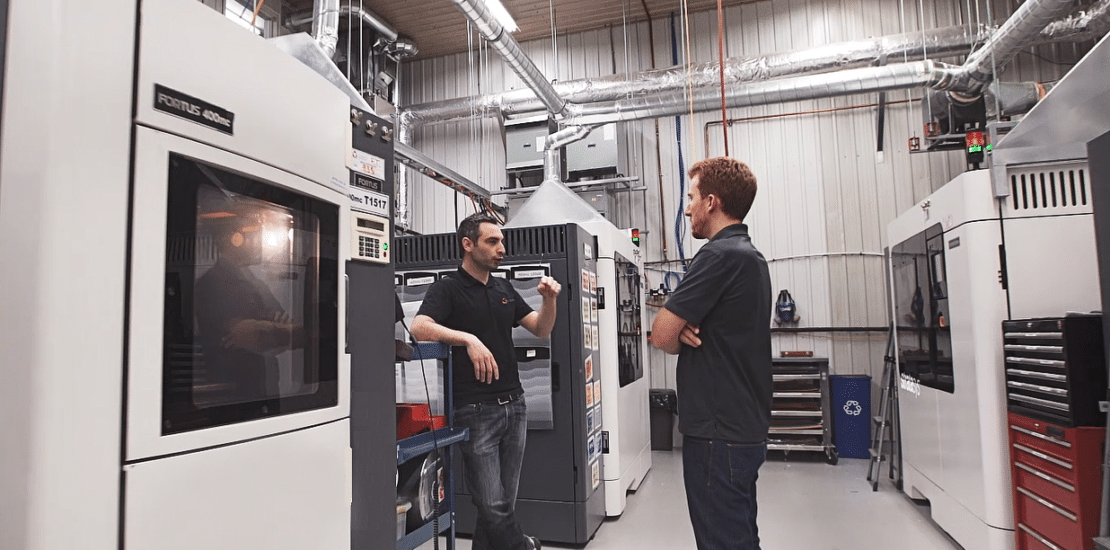- October 18, 2023
- Posted by: TheD2MCo
- Category: News

How To Save Energy When Using FDM Technology
If you’re in charge of operating your organization’s 3D printers, your main concern is probably making sure they produce good parts with maximum printer uptime. On the other hand, pondering how much energy they consume is likely not top of mind. And why should it be – it’s just the cost of doing business, right?
While that may be true, a 3D printer is just like any other device that consumes power. How you operate it determines the energy it uses and ultimately how much, or not-so-much, you’ll owe your electric power company.
As an example, let’s consider FDM printers. They need energy for multiple operations, including powering the electronics, operating the gantry system, and heating the build chamber and print heads. And while you can’t print parts without the energy to run these systems, there are ways to reduce the energy an FDM printer expends.
Practice Good Design-For-Additive-Manufacturing (DFAM)
Reducing a part’s print time affects energy consumption because printers consume more energy during an active print job than when they’re idle. When you design a 3D printed part, consider how that design will impact the overall print time. A simple example is minimizing infill as much as possible to reduce the time to print. Not only does this save energy, but it also reduces overall material use too. Leveraging 3D printing’s design freedom to consider various options can positively affect how much energy the printer uses.
Replace Support Material With Model Material
Some FDM systems, like the Fortus 450mc and the F900, allow you to swap model material for support material. This reduces the number of times the printer switches between model and support tips, decreasing print time. Of course, your part’s geometry will dictate whether this is feasible, but it’s another factor to consider.
Good Housekeeping Practices
Other quick-win strategies are also available to lower energy use. They include keeping the printer door closed as much as possible between print jobs to retain heat. Another tactic is enabling the automatic energy-saving mode to disable heaters during idle times. Turning off the bed vacuum on Fortus 450mc and F900 printers when printing is complete is an additional step you can take.
Make the Most of Energy Used
Larger FDM printers exhaust heat into the ambient surroundings. Co-locating printers in areas that require heating may be an effective way to repurpose the energy. On the flip side, if you’re trying to cool the area where printers are located, consider venting the warm air to another location to help reduce the cooling load. Customers have used vent hoods and even 3D printed custom ducts to redirect exhaust gases toward external ducting to remove the heat.
Reducing your printer’s energy footprint may not be one of your KPIs, but at some level, your organization is paying for the energy those printers consume. Taking some relatively simple steps to reduce consumption adds up over time and helps reduce operational costs.
ARTICLE WRITTEN BY ROBERT LEVESQUE.
